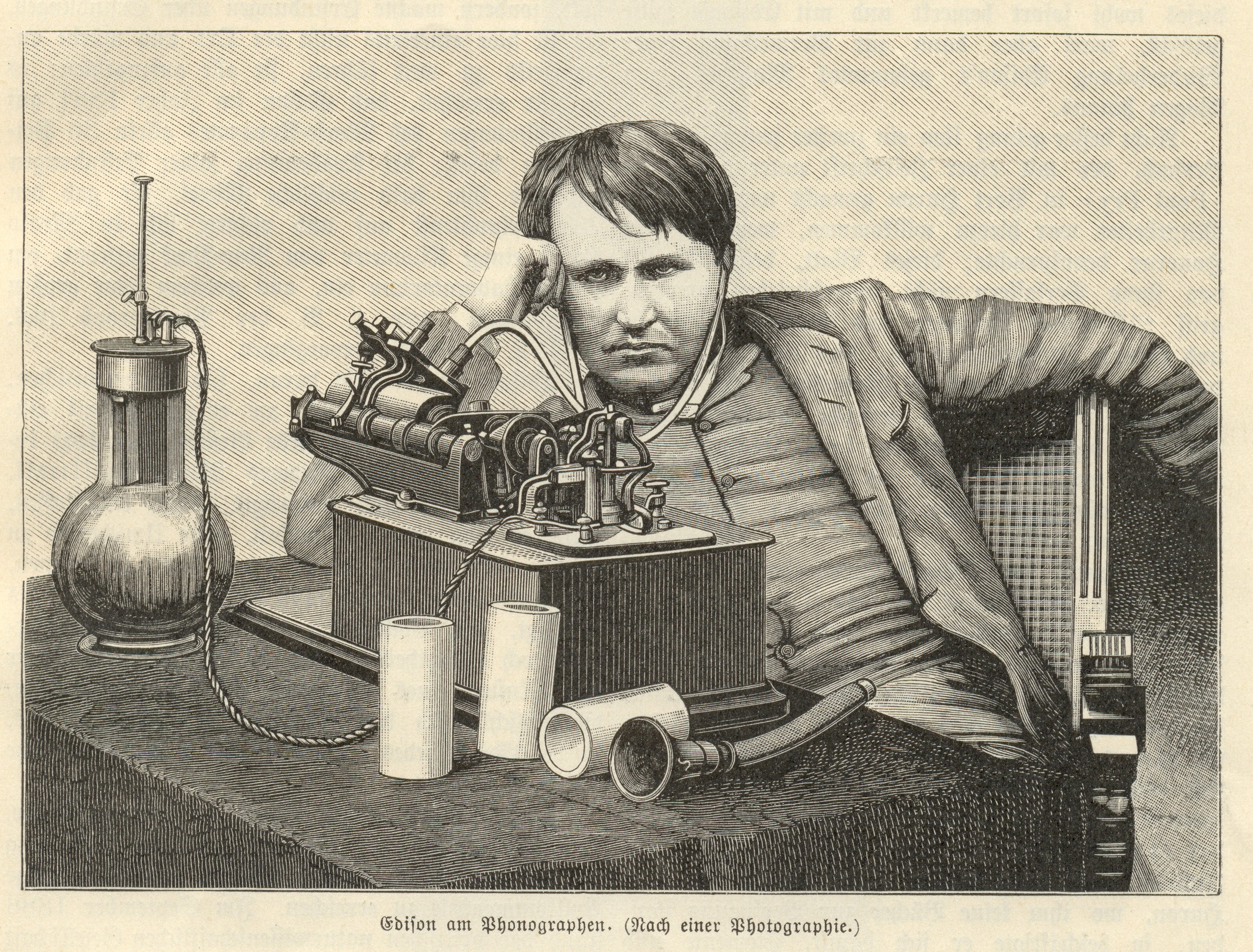Thomas Edison
 |
Thomas Alva Edison (1847-1931), American inventor, invented many important devices.
Thomas Edison was born February 11, 1847 in Milan, Ohio. He grew up in Port Huron, Michigan. Edison holds the record for the greatest number of patents granted to a single person (over 1000). Partially deaf, Edison became a telegraph operator in the 1860's, and a famously fast one. Some of his earliest inventions related to electrical telegraphy, including a stock ticker.
The invention which first gained Edison wide fame was the phonograph in 1877. While others at the time (notably Charles Cros) were contemplating the notion that sound waves might be recorded and reproduced, Edison was the first to produce a device to actually do so, and this was so astoundingly unexpected by the public at large as to appear almost magical. Edison became known as The Wizard of Menlo Park (after the New Jersey town where he resided).
He is often incorrectly named as the inventor of the electric bulb. The truth is that while others may have produced electric lighting in laboratory conditions, Edison devised a complete system to mass produce long lasting bulbs, generate power, run electricity to homes and business, and make money doing so, basing his designs upon the patents of others including Joseph Swan and James Bowman Lindsay. Many of his inventions were not unique, but Edison showed unique skills in winning the patents and beating his opponents by better marketing skills and influence. A popular myth has it that he invented the electric chair as a means of impressing the public that alternating current was more dangerous than direct current. The truth is that while he did advocate executions via AC electrocution, the chair was invented by an employee of his, Harold P. Brown.[1]
Edison's inventions using direct current ultimately lost to alternating current devices proposed by other geniuses: Nikola Tesla and Charles Proteus Steinmetz (of General Electric)
Initially, it was believed that Thomas Edison invented the motion picture camera, but it has since been proven that William Kennedy Laurie Dickson actually invented it at the Edison laboratories. However, his influence on the history of film stretches far beyond that of instigator. He became a powerhouse of film production and must be given credit for establishing the standard of using 35mm celluloid film with 4 perforations on the edge of each frame that allowed film to emerge as a mass media and not just a vaudeville novelty. He built what has been called the first movie studio, the Black Maria in New Jersey. Here he made the first copyrighted film, Fred Ott's Sneeze.
In 1891, Thomas Edison built a Kinetoscope, or peep-hole viewer. This device was installed in penny arcades where people could watch short, simple films. This was important to Thomas Edison especially because he had been searching for a way to entertain customers that were listening to music on his phonograph. Now, people could go to a penny arcade, put in a coin, put on the headphones and watch a film through the peep-hole. Later that same year, on December 29th, Edison patented the radio.
The greatest invention of Thomas Edison was the Menlo Park research lab, which was built in New Jersey. It was the first institution set up with the specific purpose of producing constant technological innovation and improvement. Most of the inventions there carried Edison as the inventor, while he mostly oversaw the operation.
His inventions benefited people the world wide and in 1878, he was appointed Chevalier of the Legion of Honor of France and in 1889 was made Commander of the Legion of Honor.
Thomas Edison died on October 18, 1931.
